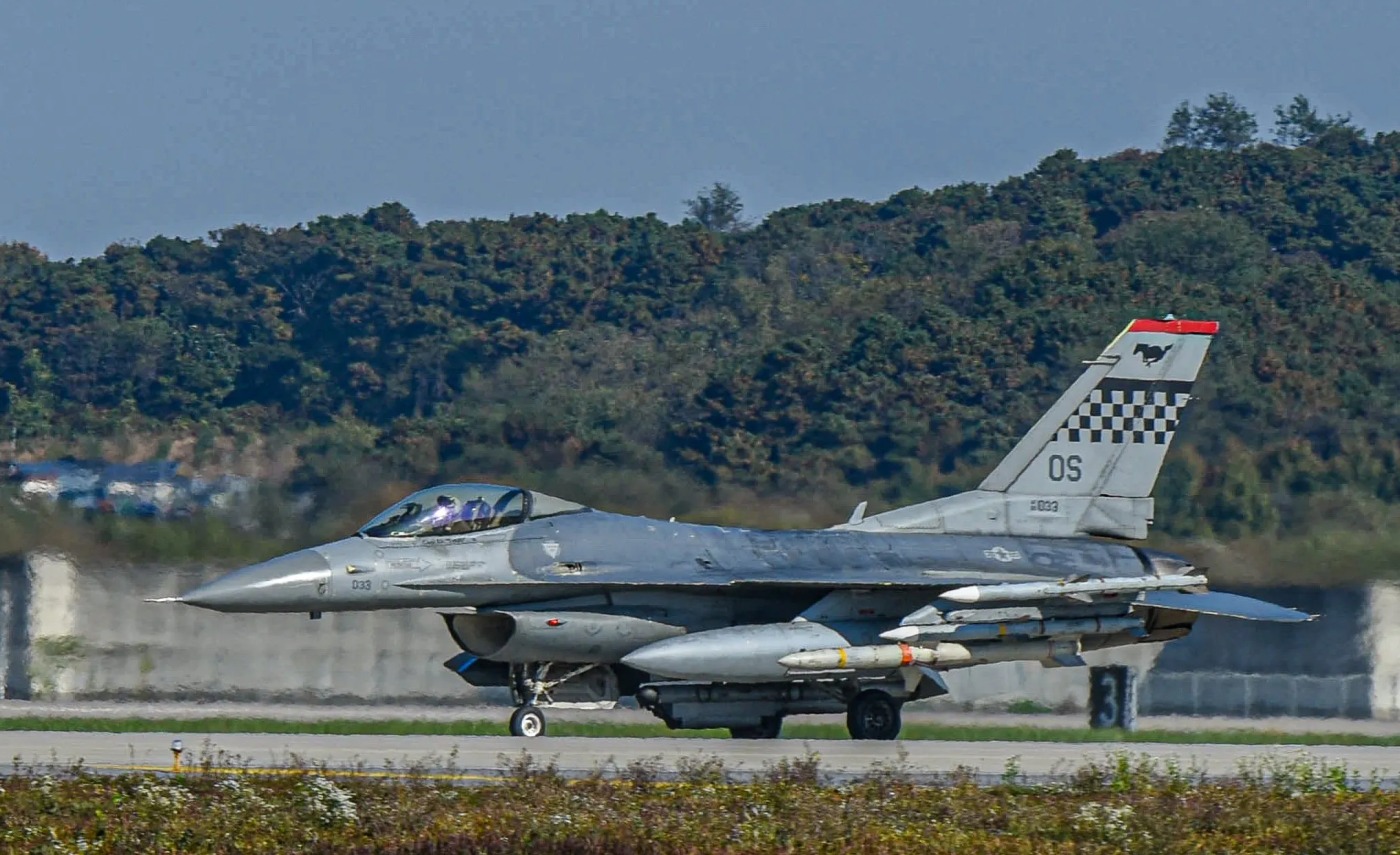As Ukraine inches closer to achieving its long-standing demand of receiving the F-16 fighter jets, Russian Defense Minister Sergey Shoigu said Ukrainian fighter jets shot down by Russian air defense systems last month nearly doubled the quantity of F-16 fighters that the West had pledged.
The Russian Defense Minister said over a conference call that over 1,400 Ukrainian aviation targets have been destroyed by Russian air defense systems in the last month, including six US-made ATACMS missiles and 37 aircraft.
“Air defense crews are getting the job done. Over the past month, they destroyed more than 1,400 enemy air targets, including 37 aircraft and six US-made ATACMS tactical ballistic missiles,” Shoigu said. The defense minister also issued a stern warning to his adversary across the border.
After several months of pleading for the fourth-generation combat-hardened fighter jet, Ukraine finally secured approval from the United States in August 2023. NATO countries Denmark and the Netherlands were the first to announce a transfer of F-16s to Ukraine. They were later joined by Norway and Belgium.
The Danish Air Force will donate 19 F-16s that have been upgraded over the years, whereas the Dutch Air Force has about 42 F-16s that it could transfer over some time.
Together, reports suggest that the two countries will transfer 61 fighter jets to the Ukrainian Air Force. It is anticipated that just over a dozen will be sent to Ukraine when the deliveries start sometime in 2024.
Shoigu also said that based on the number of fighter jets that were shot down by Russian air defenses, it would take about 20 days to obliterate all the F-16s that are being provided by the US-led NATO to the Ukrainian Air Force.
“That is, given this kind of activity from our air defense systems, they [the F-16 jets] will last about 20 days,” he pointed out.
Late last month, the US Air Force confirmed that a small number of Ukrainian pilots began training on F-16s at Morris Air National Guard Base in Tucson. During a news briefing on October 31, US Department of Defense spokesperson Gen. Patrick Ryder announced that pilot training for Ukraine’s Armed Forces on American F-16 planes may take anywhere from five to nine months.
Ukrainian officials have maintained that the F-16s would help the country face off against a much bigger and technologically advanced Russian Air Force and might even allow Kyiv to establish air superiority. However, military experts across a spectrum have conceded that the F-16 fighters may not prove to be a panacea.
F-16s May Not Solve All Problems
Despite having cutting-edge fighter jets with state-of-the-art components and lethal munition, Russia has not been able to establish air superiority over Ukraine. This has been attributed to Ukraine’s airspace being saturated with air defense systems.
Currently, there is no air superiority over the battlefield between the Russians and the Ukrainians. Most air control on both sides is provided by anti-air artillery and surface-to-air missiles, or SAMs. However, because SAMs typically need a line of sight, which limits their potential range at lower altitudes, Ukraine is too large for them to cover. This is where a fighter jet comes into the picture.
Due to their mobility and line of sight, fighters are an excellent choice for places with little SAM coverage. In addition to avoiding enemy SAMs, fighters can engage other aircraft operating at low altitudes, which is one reason why the officials in Kyiv kept pleading for the F-16s and other Western-grade fighters from its NATO partners.

The American-made F-16, in many respects, has been recognized as the ideal platform by the Ukrainians. It can perform multiple roles, including covering soldiers from the air, attacking ground targets, engaging opposing aircraft, and intercepting missiles.
An engineer with the think tank RAND Corporation, Michael Bonhert, recently argued that “The aircraft’s first role will likely be supporting air defense by intercepting cruise missiles. Given Russia’s low monthly capacity for missile strikes on Ukraine, only a few F-16s are necessary to intercept cruise missiles that enter Ukrainian airspace — providing needed relief to Ukraine’s overtaxed SAMs.”
Elaborating on another major role that the F-16 fighter may play, Bonhert said, “As Ukraine gains proficiency with F-16s, the next mission will be suppressing Russian SAMs, a mission that is more involved than stand-off strikes. F-16s are well suited to operate the AGM-88s that Ukraine has been supplied to suppress forward Russian SAMs. These destroyed Russian SAMs are expensive and unlikely to be replaced quickly.”
With the first batch of F-16s pledged, it is conceivable to complete the two missions detailed by the expert. However, despite these utilities, there are several bottlenecks associated with the operation of these fighters by the Ukrainian Air Force-with training and maintenance only being a few mentioned by experts time and again.
With Russia quickly adapting to all the new weapon systems that Ukraine introduced into the battlefield-ranging from HIMARS to the long-range Storm Shadow to ATACMS missiles now, the deployment of F-16s may not prove to be a game changer.
However, shooting down all F-16s within 20 days may seem like an ambitious claim by the Russian defense minister.
- Contact the author at sakshi.tiwari9555 (at) gmail.com
- Follow EurAsian Times on Google News




